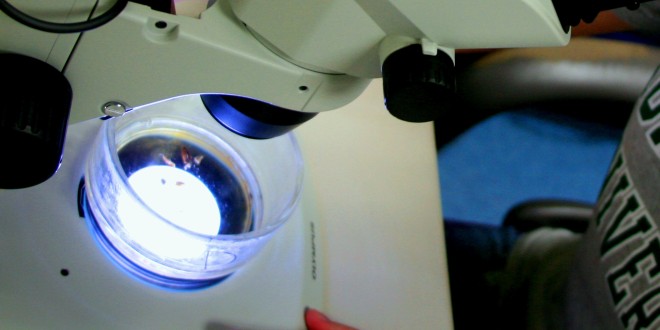
Recently, while listening to one of Jacksonville University’s marine science graduate students defend her thesis research, I was struck by how much life there is in the St. Johns River that no one can see without a microscope.
The life in our river is very abundant and mostly unseen. In fact, there are more microscopic forms of life than there are macroscopic, or things visible to the naked eye. You get a hint of it if you look closely at water from the river and see the tiny objects moving in what looks like random motion.
To effectively look for these organisms, it is usually necessary to pull a very fine mesh net slowly through the water. By filtering large quantities of water, you can concentrate them enough to see large numbers fairly easily. The graduate student has taken monthly samples from three places in the river and counted well over 800,000 individuals.
As I have mentioned before, the St. Johns River is an estuary. This mix of seawater and fresh water makes for an ideal habitat for many species to reproduce. There are actually fewer predators to eat the young and, therefore, the area becomes a nursery ground for many of the commercially important species of fish, shrimp, crabs and shellfish, like oysters and clams.
Many species migrate into the estuaries to release their eggs and sperm into the water; it’s a matter of luck and some chemical clues that they find each other and start a new organism. These tiny larval juveniles thrive in the brackish environment. They are part of that microscopic world called plankton.
The word plankton comes from a Greek word meaning to wander or to drift. So, plankton are at the mercy of the currents. They have limited swimming abilities and must rely on the movement of the water, plus some pretty interesting behaviors, to get them to where they need to be to survive. Many plankton will swim up on the incoming tide and then swim down on the outgoing tide, to gradually make their way upstream. And then some will reverse the pattern to get out of the river.
Plankton come in two general varieties. The phytoplankton are plants and can make or photosynthesize their own food, while the zooplankton are animals and have to eat phytoplankton (or other zooplankton) to survive.
There are hundreds of kinds of plankton in the St. Johns River. What kind of plankton occurs where is a function of many factors. Salinity (salt content), temperature (seasonal variations), currents and bottom types (rock, sand or fine mud) are a few of the factors that help determine who is where.
And it gets even more complex, because many species have multiple larval stages that are very difficult to tell apart. Sometimes you can only tell the general group, not the species, of an individual. To know a given species, someone has had to get the adults to reproduce and then get the larval forms to successfully survive through its various stages, documenting what each stage looked like and finally get the larvae to reach final or adult stage. Then we will know the life stages of that species.
And while we do know many species, there are so any more that we do not know. It’s part of what makes marine science and St. Johns River life so interesting.
It’s not what we know, but what we don’t know.
ASK RIVER LIFE
It is hurricane season, so how do marine species survive in these violent storms?
For most marine species, hurricanes are no big deal. Fish and marine mammals almost seem to sense an oncoming storm and go to deeper water. But for some marine species, especially those that live in shallow water or along the shoreline, such as oysters and clams, hurricanes can be devastating and even deadly. In addition to the physical impact of the waves, the huge amount of rain can reduce salinities and affect marine organisms in more subtle ways.
River Life runs the last Friday of each month in The Florida Times-Union. E-mail A. Quinton White, executive director of Jacksonville University’s Marine Science Research Institute, with questions about our waterways at qwhite@ju.edu. For more on the MSRI, visit ju.edu/msri.
 Wave Magazine Online Jacksonville University News Hub
Wave Magazine Online Jacksonville University News Hub
